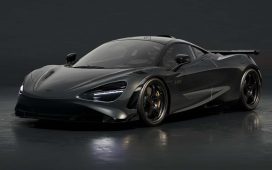Cold makes the chemical process that electric vehicle batteries use to store energy slow down, which is why with much of the US in a deep freeze, EV owners are dealing with reduced battery performance and increased charging times.
A study by the American Automobile Association found that at 20 degrees, an EV can lose as much as 12% of its range. To make matters worse, turning on the cabin heater can bring that up to 40%.
Though to be fair this isn’t just an electric vehicle problem. The gas mileage of a conventional gasoline car is about 15% lower at 20 degrees than at 77 degrees, according to the US Department of Energy.
Unable to view our graphics? Click here to see them.
Currently something under 2% of all vehicles in the United States are electric, so the problem isn’t affecting large numbers of people, and the state with the highest sales is still California, where extreme cold is uncommon. But that’s changing. US electric vehicle purchases set a record in the third quarter of 2023, making up 7.9% of all new car and light truck sales, according to Cox Automotive.
No cars or trucks do as well when it’s freezing out, but electric ones do worse. Here’s why:
Why do EVs charge more slowly when it’s cold?
Colder batteries don’t work as well. The ideal operating temperature for an EV battery is between about 68 and 86 degrees, depending on the model.
As the temperature drops, the electrochemical processes the battery uses to charge slows down. To charge, the car first has to warm the battery, which requires time and energy. Because of this, the battery takes longer to charge the colder it gets.
A battery charges when lithium ions stored in the cathode transfer back to the anode. On cold charging conditions, the ions flow less efficiently through the anode and the battery’s capacity diminishes.
How to get the best performance from an EV in the cold
1. Preheat your battery
Most EVs today automatically pre-heat their batteries when they know they’re heading to a charger. This allows them to charge quickly and efficiently when plugged in. If you charge at home, consider plugging in right away while the vehicle is still warm.
2. If you can, park indoors
This keeps your battery warmer, so not as much energy has to be used to warm it up later. A car cover can also help.
4. Heat the cabin before your drive
If it’s really cold, consider turning on your car’s heater while it’s still charging. Using a heater at 20 degrees resulted in a 41% decrease in driving range and a 39% decrease in fuel economy, AAA found. If you warm up the inside while the vehicle is still charging, you don’t have to use battery power to bring it to a reasonable temperature.
If you don’t have the chance to do that, the seat heaters use less energy than the cabin heaters.
5. Make sure your tire pressure is correct.
Underfilled tires result in increased rolling resistance, which means it takes your vehicle more energy to move forward.
6. Drive with eco-mode on
Most EVs offer this, which requires the least amount of energy while sacrificing some performance.
7. Don’t let your battery get below 20%
It will need power just to warm up enough to charge, so if it gets too low you might not be able to charge even if you’re plugged in, depending on how cold it is.
Stephen Beard contributed to this report










